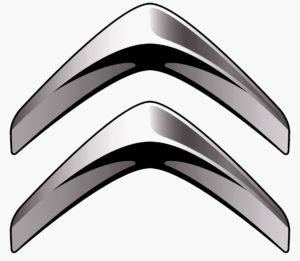Forum Replies Created
-
AuthorPosts
-
After making it very clear a flatbed was needed, I’ve had the RAC (twice i think?) eventually turn up with a van – then realise a flatbed really was needed. Added HOURS to a dangerous wait.
Pulleys. Not even much point in carrying a spare for roadside repairs as fitting it requires a lot of car to come off. I’ve seen where people have – pre-emptively – added welds to the two halves to reduce the chance of shearing.
I wonder what causes this. Any clues from the wreckage Peter? I wonder if it’s mis-alignment of pulleys? belts too tight?
They look lovely – and deserve to be back on a working car.
Great result. It’s very exciting receiving packages of very-hard-to-find pieces like that. Are they just like yours: with two holes to hold the lamp bodies on, or three-holers that you need to adapt?
With that split pin removed, the cup and pushrod should come out together
BTW. The ball can’t be seen as it is inside the little cup – not under it. If you hit from underneath as i suggested, you would be hitting on the flat base of the little cup – the ideas being that the cup, ball and rod all came out/ up together. That’s how mine came out, with the locking pins still holding the cups on the rods. but there is probably an alternative way:
Hidden within the rubber gaiter is another clip that hold the little cup on the end of the suspension pushrod. If you are replacing the gaiter anyway, you could hack the gaiter off to reveal and remove this other pin. You could then remove the pushrod – but leave the cup in place. You’d probably still need to work on removing the cup for when you come to fit your new gaiter but, with the suspension cylinder out of the way, at least you would be able to see what you were dealing with.
Hi. They do get jammed in there pretty tight from years of suspension action.
There is a large hole in the bottom of the cup. If you can find something suitable to use a drift (maybe a small socket?) you can try walloping the end of the rod through the cup to loosen it.
Maybe that, and some penetrating oil, will eventually convince the rod to let go.
John
I may have something for you. Someone in the US has parts. See photo below. You need to email Paul Anderson using ‘citparts@gmail.com’. He bought the old Brad Nauss business, so trades under that name.I’m told that there are backing plates for slightly later Lucas lamps that fix to the plates with three screws. yours clearly seem to be the type where the light fixes to the plate with just two screws. i don’t know whether one could be adapted in place of another, but just bear that difference in mind if you are picking and choosing parts. Paul can probably advise you.
Just be grateful that it’s a slightly older car and you didn’t need to source ‘gris rose’ coloured shrink wrap.
I’ll put some feelers out in the USA.
paul
Another thought. Are your lights the same as the ones used in the US/ Canada? If so, you might find a better condition pair of plates there. I can put some feelers out for you if it helps.
You may already have seen this:
https://www.seattlecitroen.net/sedan-taillight-summary
Are your lights the ‘Lucas with screws’ ones?
If everything is rusted and weakened I would:
(1) replace the ‘U’ shaped straps with new metal and
(2) fabricate a simple flat backing plate and bond it on with a layer of a sikaflex product to negate capillary action/ rust between the layersThanks for the explanation. I’m now thinking you mean the metal backing to the lights themselves – not the large plinth that they, and the number plate bolt to.
making fake recaps seems big business these days. Are you sure the part you need is not available as an expensive poor quality, ill-fitting repro? Perhaps, like me, you try to avoid repros at all costs, but it’s worth exploring if you have not done so already.
I’m not sure what you are trying to achieve here.
If it’s build up extra strength then (without seeing them) it’s difficult to see how 0.5mm is going to make a lot of difference.
Plating only adds a layer a few microns thick and usually needs an acid dip first to get back to a good/ clean surface.
My first thought is to use a spot welder to add some reinforcing pieces in selected areas – but I probably misunderstand where metal is needed where and what the part looks like.
can you put up some pictures?
Great result!
Being an efi car, did you ever find out where your temperature warning/ panic light was actually fitted? If not, you need to check all the likely spots and see if there is a sensor and wire connected. You need to rule out the EFI cold start and thermal sensors – plus the one you’ve just wired up. If you find another (fourth?) sensor, it’s easy enough to run a new wire back to the dash and that white socket. Other than a continuity test, i’m not sure how you’d confirm it works.
Hi
That’s an interesting discovery and your conclusion sounds promising! Keep us informed as it’s quite a mystery.TEST – testing the functionality of the forum(s)
-
AuthorPosts



